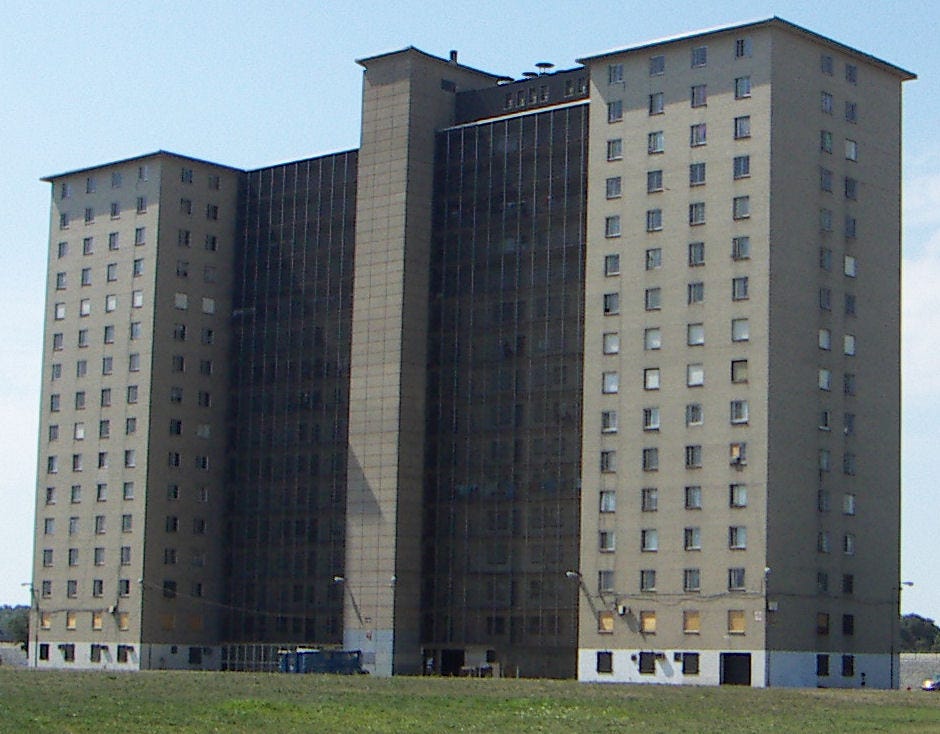Democrats' Housing Policy is Failing the Working Class
They must be unafraid of attacking restrictive zoning and building more public housing.
Housing is unaffordable, not just in New York City and San Francisco but across the country. In 88% of counties, housing prices outpaced income growth from 2000 to 2020. The reason is simple; America is not building enough housing.
Despite the simplicity of the diagnosis, Democrats have been unable or unwilling to offer a simple solution. Instead, they produce technical solutions like tweaking tax credits or creating yet another grant program—ideas that are both inoffensive and inadequate. Democrats are shirking their responsibility to lower housing costs for millions of American families.
Why? They are wary of upsetting an outspoken minority of suburban homeowners who benefit from rising home prices and gated communities. To win back the working class, Democrats must be willing to transform federal housing policy to make housing affordable and available for the many, not just the few.
To get a sense of the status quo, look at the Harris campaign’s housing proposal. It called for the construction of 3 million new housing units, largely through tax incentives, and the subsidization of first-time homeowners through down-payment support. The plan accepts the federal government’s longstanding role in housing policy as little more than a financier that dials tax credits up and down. Meanwhile, land use regulation is deferred to local governments, giving them power to decide whether to allow new housing. Development is deferred to the private sector, giving them power to decide whether to build it
This status quo has failed millions of American families, from poor renters to aspiring homeowners. In a typical year, landlords file 3.6 million eviction notices, nearly seven per minute. Families with housing stability don’t necessarily have housing affordability; over 42 million households are paying more than 30% of their income to housing costs. And the housing market is locking out younger generations. Fewer millennials own homes by age 30 than previous generations did.
Democrats must be willing to leverage the power of the federal government to correct this failure. That requires two big federal policy changes that allow more private housing to be built and that build more public housing.
First, the federal government should withhold federal funding from localities that use restrictive zoning to block new housing. The Biden Administration proposed carrots, like additional grants, for local governments to reform restrictive zoning policies. But many towns and cities are happy to forgo more federal funding if it means stopping housing development. It’s time to switch to the stick, threatening to withhold existing federal funding to localities obstructing new housing.
Of course, zoning is a contentious political issue. It’s no surprise the Harris campaign’s housing plan of more than 2,500 words doesn’t include the word “zoning” once. But Democrats have been overcautious on the housing issue. There are ways to permit local decisionmaking while forcing more housing construction.
For example, the federal government could compel localities to adopt a “zoning budget,” a creative idea offered by Roderick Hills and David Schleicher. In this case, cities, counties, or states would receive a target goal for new housing construction without federal ukase on which exact neighborhoods to build that housing in.
Take a basic hypothetical example. The federal government conditions highway funding for New York City on the construction of 20,000 new housing units divided equally among the boroughs. If Manhattan does not want to allow 5,000 new units, its local politicians could negotiate with politicians from other boroughs to take on more. You can think of it almost as cap and trade for housing construction. One trade could be Manhattan redirecting some of its school or park funding to the Bronx in exchange for the Bronx taking on some of Manhattan’s housing obligation.
Second, it’s time for the federal government to build public housing again. Since the days of the infamous Robert Taylor Homes, public housing has been a political third rail. That’s why there is limited appetite in Congress to repeal the Faircloth Amendment, a law that codifies a limit to the number of federal public housing units.
Democrats need to stop conceding this argument; we are capable of learning lessons from the past and improving on what we did half a century ago. Montgomery County, Maryland has set one example for how we could do so. The Laureate housing development has 268 units, including not only low-income units but workforce housing units, intended for families making even a bit more than the average income, and market rate units. The combination of mixed-income units helps make this project financially sustainable. And unlike the dilapidated public housing towers of the past, the Laureate is desirable, equipped with a yoga studio, a pool, and a pet washing room. The federal government should scale this model, creating more and better housing units not just for the poorest Americans but also for working- and middle-class renters.
Rewriting the federal government’s role in national housing policy is undoubtedly controversial. Local governments will fight tooth and nail against intrusion. Developers will raise hell if they face renewed public competition. Some Americans may prefer this status quo because it benefits their bottom line, maintains their community as is, or they want a more limited federal government. But it’s not clear the majority of Americans want that, and it is clear that we have a housing crisis in this country.
There is a growing discussion in pundit circles about how Democrats need to support “a politics of abundance,” as Ezra Klein coins it. Just in the past couple of weeks, Benjamin Wallace-Wells has asked in the New Yorker “Do Democrats Need to Learn How to Build?” and Brian Deese, the Director of President’s Biden National Economic Council, explained in Foreign Affairs “Why America Struggles to Build.” Marc Dunkelman’s new book Why Nothing Works dives deeper, exploring the history of how progressivism has neutered the government’s ability to build.
There is no question that to answer our nation’s biggest challenges, like housing, we will need to build far more and far faster. To do so Democratic leaders can’t be afraid to use federal power. And when they do, they need to be clear about on whose behalf they will use that power. If they want to reclaim their credibility as champions of America’s working class they must be unafraid of offering a bold vision for housing in America.




Great post! It would be interesting to see how increases in housing stock/decreases in prices effect eviction rates as opposed to a changing composition of housing i.e. if everything is a 4 bed house, then perfect competition and relaxed zoning may still yield higher-than-acceptable eviction rates